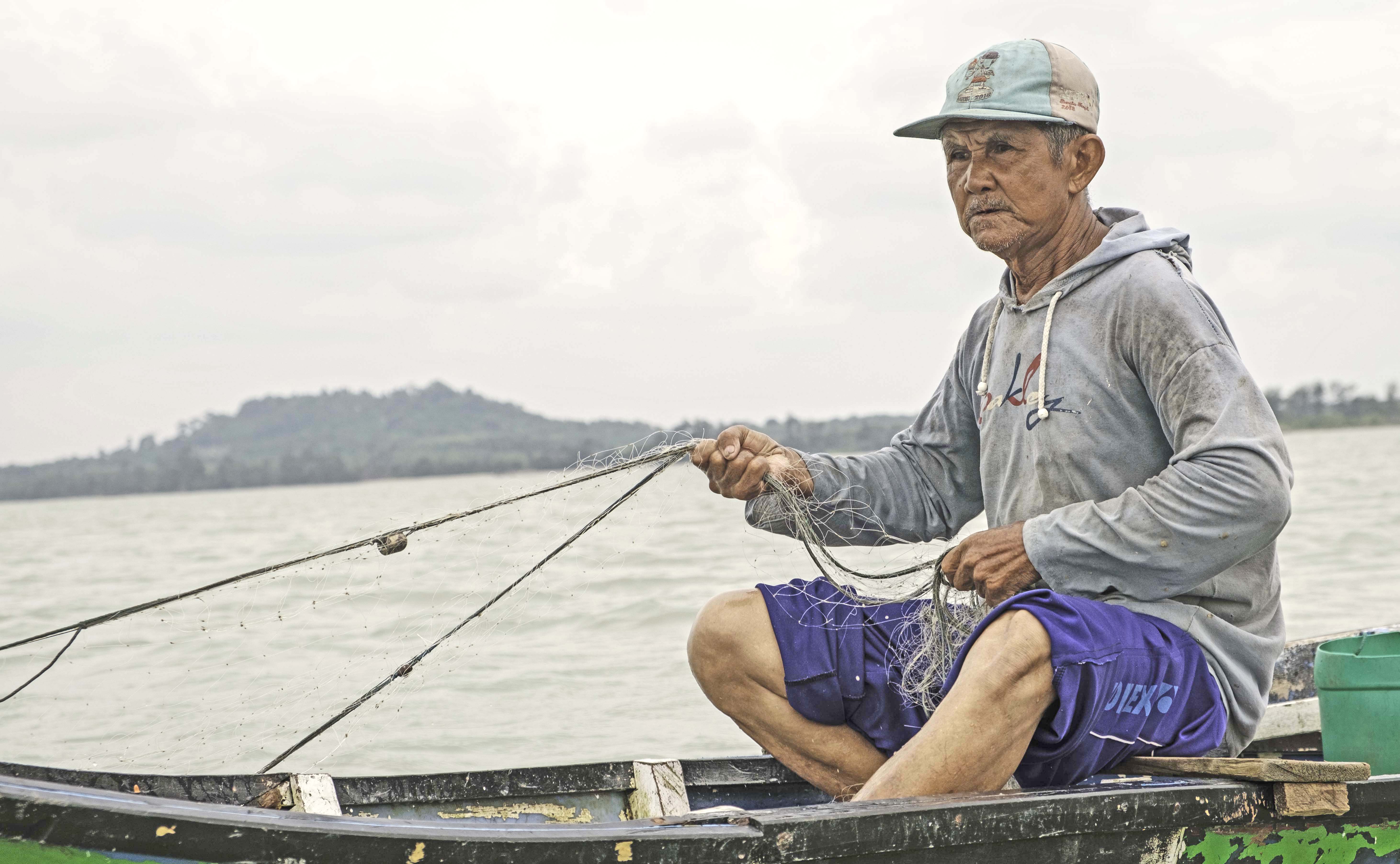- Bangka Belitung, in Indonesia, produces almost a fifth of the world’s tin. It has been devastated by illegal tin mining.
- PT Timah, the islands’ dominant miner, has repeatedly supplied tin from Bangka Belitung to major tech firms including Apple and Samsung.
- Timah has presented itself as a responsible supplier. But for years, its leadership oversaw a large-scale corrupt scheme to source illegally mined tin, according to a recent judgement by an Indonesian court.
- Three former Timah executives have been jailed. But an investigation by The Gecko Project has found that illegal tin is likely to have entered Timah’s supply chain, even as the court case was under way.
This investigation was published in collaboration with Follow The Money (in English and Dutch), Yle and KCIJ Newstapa.
As our boat chugged across the mouth of the Rumpak river, on the Indonesian island of Bangka, the ebbing tide revealed heavy grey silt clinging to the roots of mangrove trees. Young trees had been cut down in places, leaving jagged stumps.
“The waters here used to be clear," said Eko Sanjaya, a 22-year-old fisherman, gazing into the murky depths. “But now everything we catch—fish, shrimp, crabs—smells like oil. There has been huge damage to the environment.”
Nearby, pontoons laden with pumping machinery were tethered to the mangroves, hinting at the cause of the destruction—tin mining.
In 2024, Indonesia was the world’s second-largest tin producer. Almost all of that comes from the islands of Bangka and Belitung off the east coast of Sumatra, which collectively contribute nearly a fifth of tin produced worldwide. The tin mined here ends up as solder in smartphones, circuit boards and semiconductors. Demand is projected to surge in the coming years, driven by the tech at the heart of the green transition.
But mining has left the islands dotted with craters, the scars of abandoned mining pits, many of which have gradually filled with water to become lakes. Much of it has been illegal.
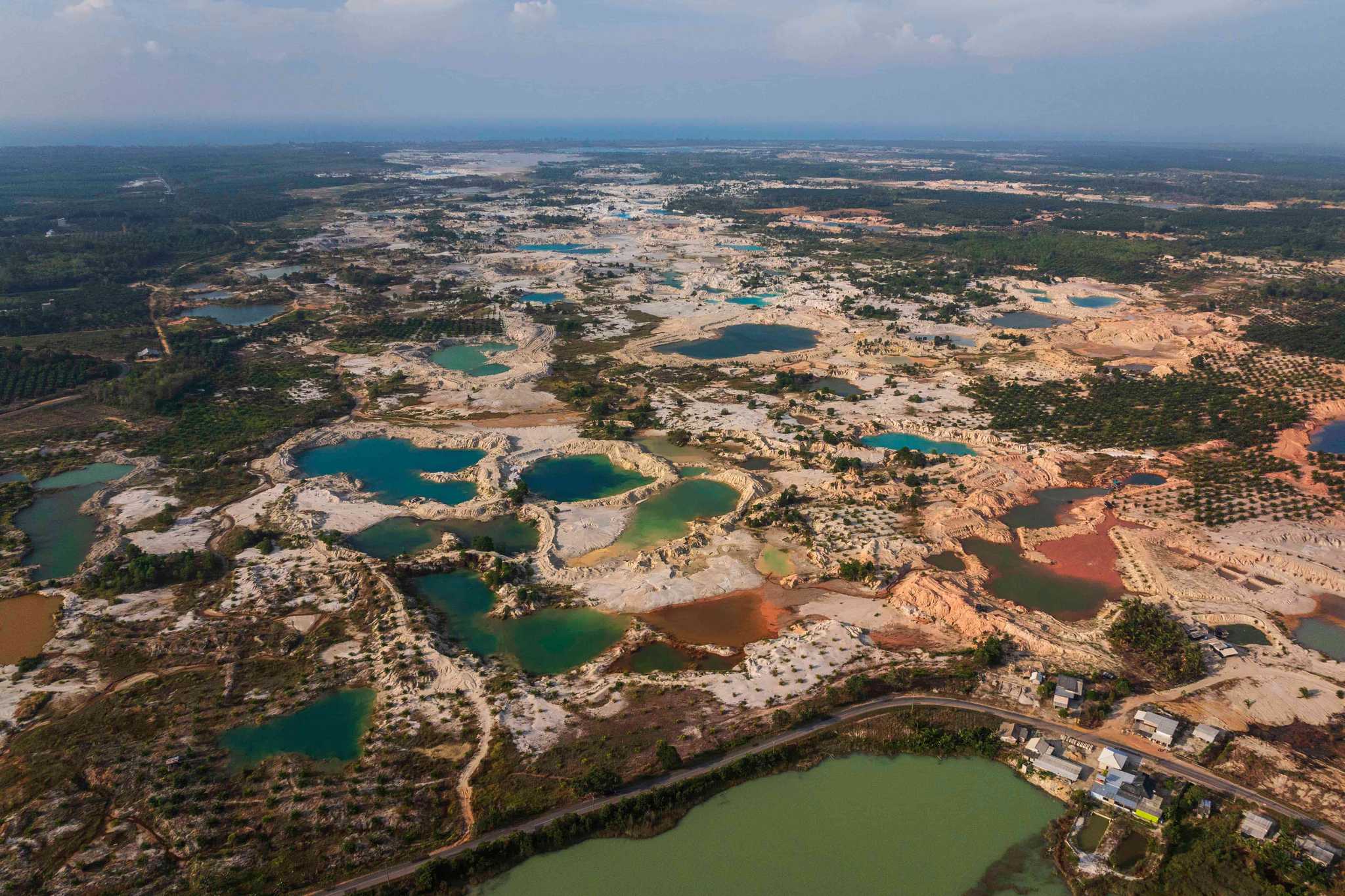
For decades, illicit mining has plagued these islands—an open secret acknowledged by the government, companies and locals alike. Against this backdrop, state-owned PT Timah, the world’s fourth-largest tin producer and the islands’ dominant miner, has consistently positioned itself as a responsible supplier.
But for years, as Timah supplied many of the world's leading tech brands, its executives were overseeing a sprawling, complex scheme designed to launder illegal tin. According to a recent court judgement, as recently as 2022 Timah was deliberately buying tin from miners criminally ransacking the islands through a network of intermediaries and shell companies. Court documents show that Timah allowed illegal miners to operate in its own licensed concession, and manipulated records to whitewash its purchases of illicitly-mined tin.
The case led to the jailing of former top-ranking executives at the state-owned firm. But an investigation by The Gecko Project suggests that Timah’s links to illegal mining extend beyond the scope of that case, and continued even as the trial was under way. One middleman who indirectly supplies Timah with tin admitted to The Gecko Project in December that he doesn’t ask where the metal comes from—only that it keeps coming.
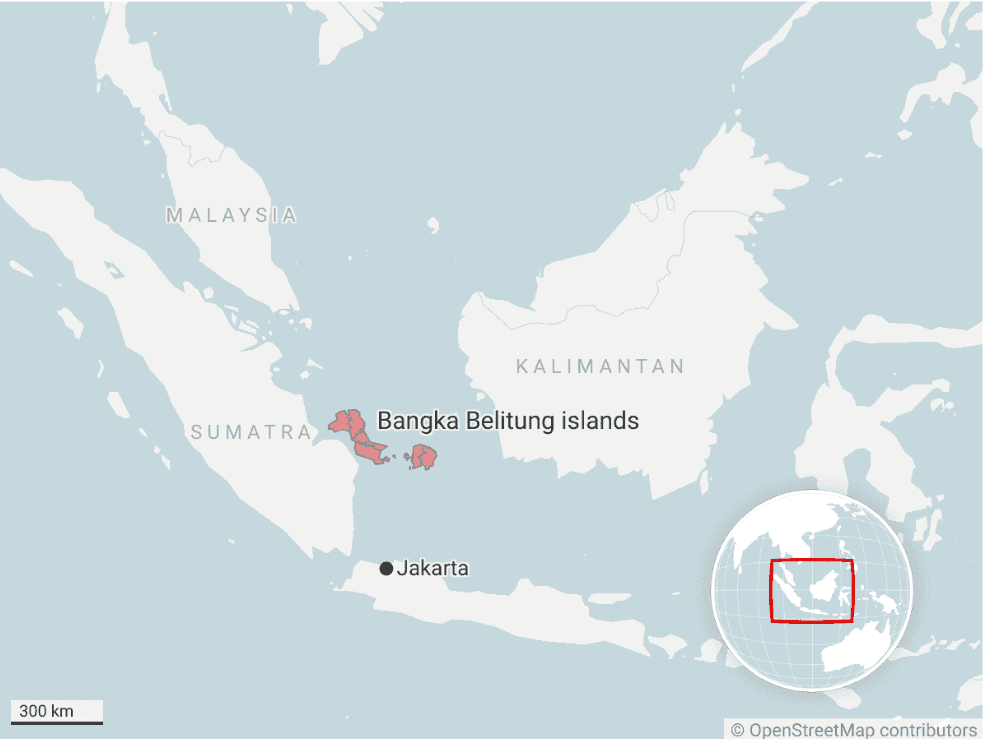
Despite the nationwide attention generated by the case in Indonesia, illegal tin mining persists in Bangka Belitung. Offshore operations have become increasingly difficult to detect, concealed behind dense mangrove forests on Bangka’s scattered islets, in forest areas or near Belitung’s port towns. When authorities raid one site, miners simply shift to another or pause operations, ensuring the illegal trade persists.
Much of the tin exported from Indonesia comes from this lawless system. It passes through a web of artisanal miners who dig to survive, collectors who buy without asking questions, and traders who offload it into opaque supply chains. Systems put in place to counter the most egregious human rights abuses associated with mining, meanwhile, are not preventing tin from Bangka Belitung from entering international markets.
“Tin mining in Bangka Belitung has had a dirty reputation for a long time,” said Eve Warburton, director of the Australian National University’s Indonesia Institute and an expert on Indonesia’s extractive industries. “But I haven’t seen major consequences for the companies involved.”
Life and death on the tin islands
Timah is deeply entwined in Bangka and Belitung’s economy and society. The company’s branding can be seen across the islands, announcing its sponsorship of everything from schools and regional futsal tournaments, to blood drives and mass circumcisions.
In Timah’s shadow, other smaller players have set up, selling into a network of smelters that in turn sell processed tin to trading companies and manufacturers, mainly in India, South Korea, Singapore and China.
The mining industry employs more than 15 per cent of the islands’ workforce and provides about 20% of its gross domestic product. But the economic benefits are unevenly distributed, and have come at a heavy environmental cost. Researchers and nonprofits have identified high levels of lead, cadmium, zinc and chromium near mining areas, pervasive river pollution and the destruction of thousands of hectares of mangrove forests.
In 2022, the Indonesian Ministry of Energy and Mineral Resources estimated that Bangka Belitung still had nearly seven million tonnes of tin ore remaining. However, easy-to-access legal reserves onshore have dwindled, even as analysts project a surge in demand linked to the electronics, solar and electric vehicle (EV) industries.
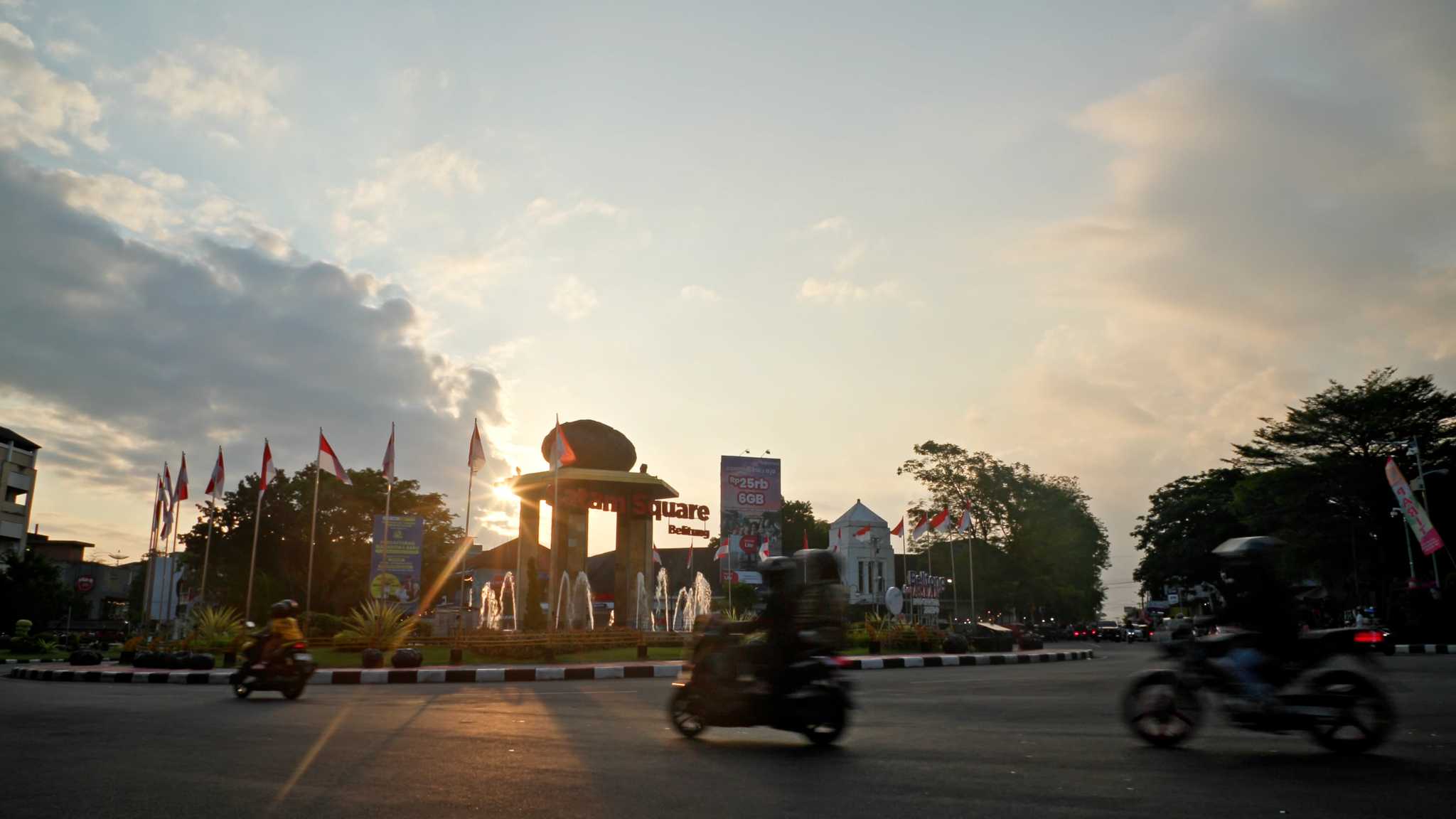
In response to this decline in onshore tin extraction, companies have increasingly begun mining offshore. Major companies like Timah obtain mining licenses that cover large marine areas, then deploy ships equipped with vacuums that scour the seabed for ore.
As large-scale miners like Timah moved offshore, they were followed by hundreds of illegal operators. This has exacerbated the industry’s environmental impacts. Offshore miners often use suction vessels equipped with powerful pumps, tearing apart the seabed and damaging corals, according to Rudy Tambunan, an environmental expert and lecturer at the University of Indonesia. “These changes impact flora and fauna, causing them to either die immediately or migrate elsewhere,” he said. A 2021 study found that the impact of tin mining in an area near Bangka island had cut fishermen's income in half.
Illegal tin mining is widespread across Bangka Belitung, both inside and outside licensed mining areas. Along coastlines, in forests, and even within active mining concessions, miners dig through the land without permits. Some operations are run by independent miners struggling to make a living, while others are backed by well-connected figures who exploit regulatory loopholes.
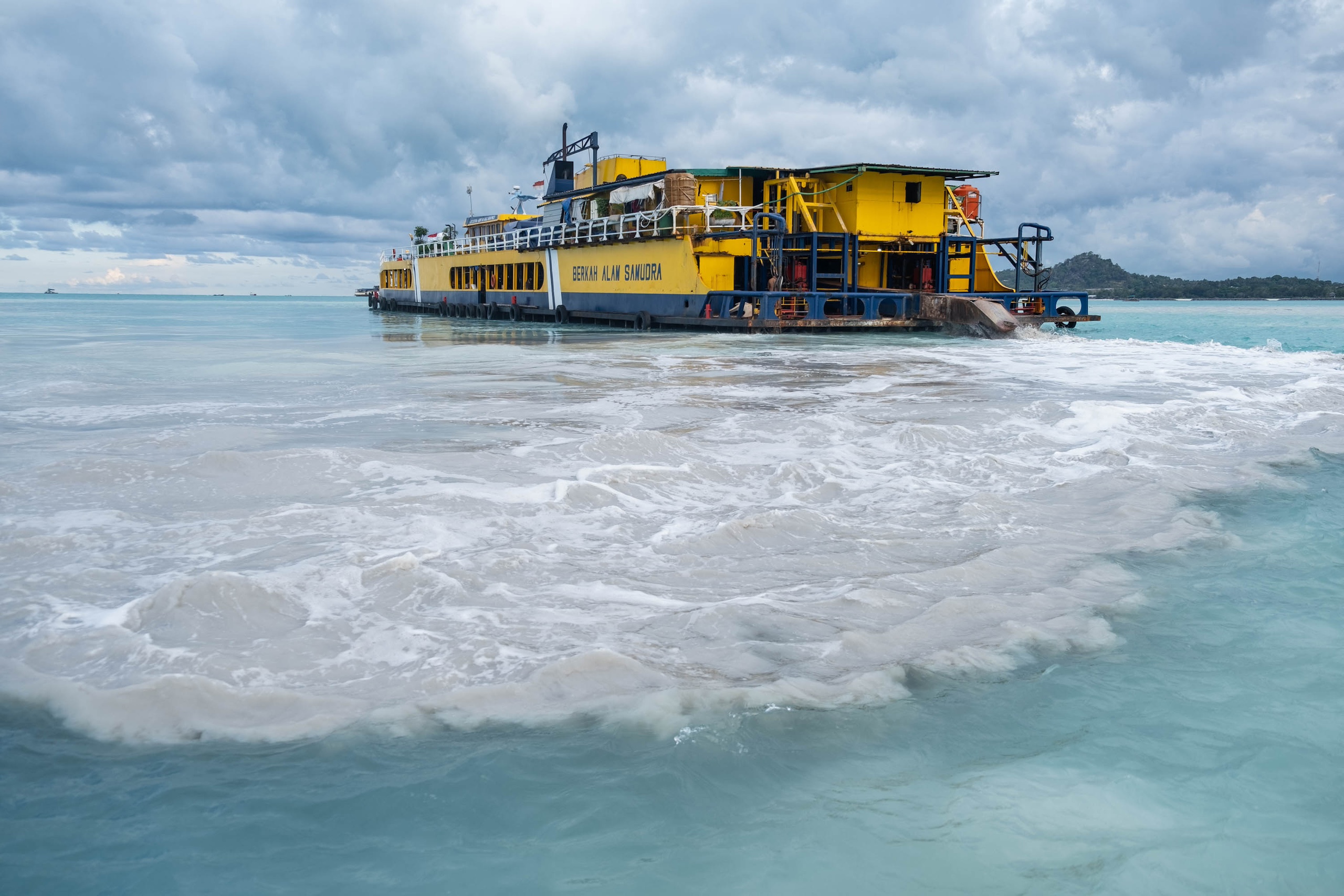
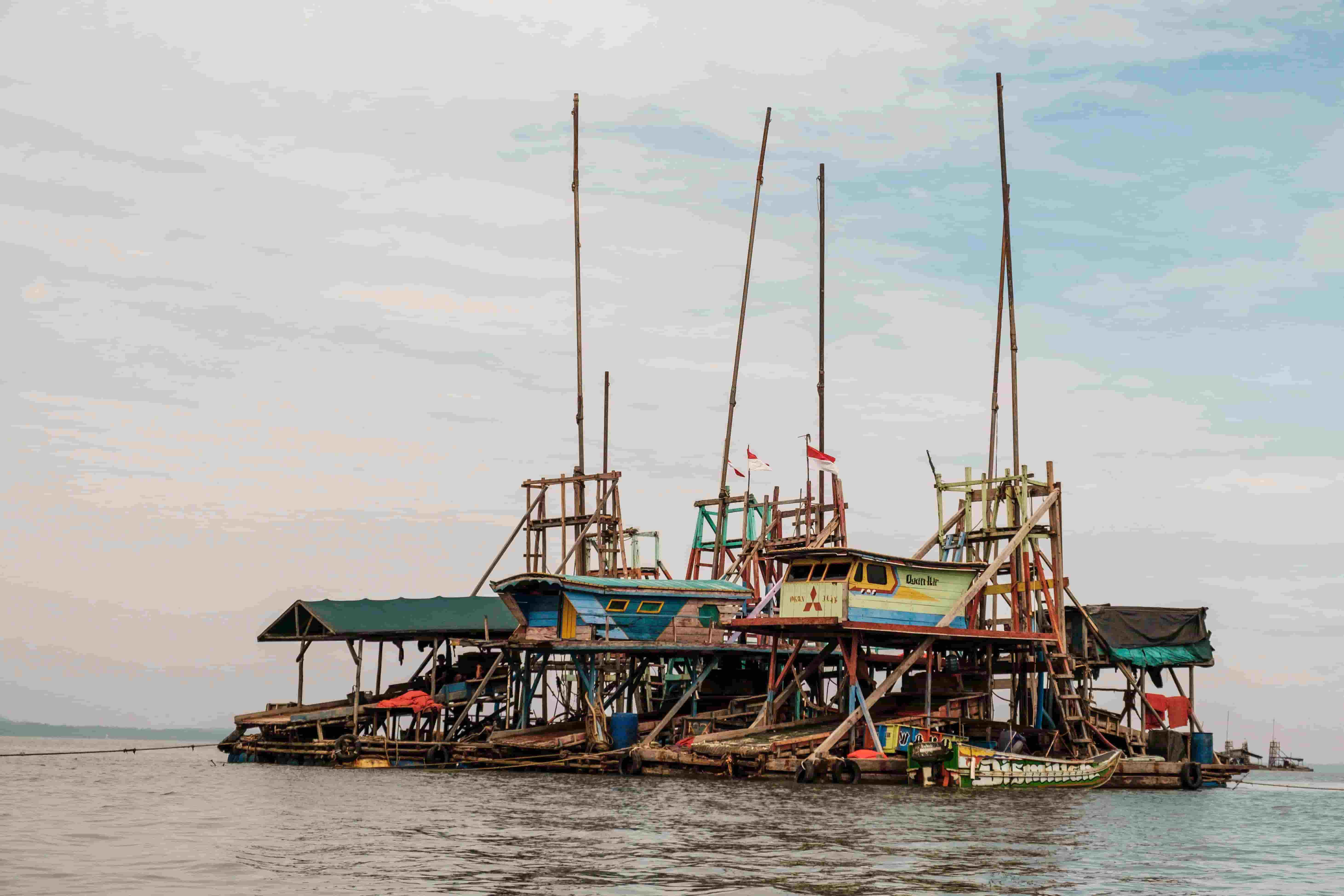
Illegal operations tend to use one of three methods to reach the ore. Some deploy suction pontoons discreetly in hidden river channels or anchor in the open sea, dropping pipes down more than 18 metres to extract sand containing tin ore. Others pump water into sand extracted from shallow coastal areas to loosen the sediment. One particularly hazardous form of illegal mining is diving, where miners descend up to 20 metres underwater, breathing through hoses, and manually extract tin-rich sand from the seabed.
Accidents are common. The environmental nonprofit WALHI Bangka Belitung counted at least 38 deaths on illegal mining platforms between 2021 and 2024.
Robert, a miner from Selapan, South Sumatra, spends long days on wooden pontoons dredging the seabed. “We work without safety gear—no guarantees, just risks,” he said.
His team, including boys and young men aged 14 to 20, operates with makeshift equipment, diving as deep as 18 metres. They earn 120,000 rupiah, around US$7, for a kilogram of tin ore. Wholesale tin prices on the London Metals Exchange have hovered around $31 per kilogram in 2025.
A 2024 study from Bangka Belitung University described illegal mining as a key driver of environmental destruction and social conflict in the province. Once rich in biodiversity, Bangka Belitung has now been hollowed out by unchecked extraction, earning the nickname “Dead Islands.”
Amid the devastation, Timah presented itself as a responsible tin producer. This has paid dividends: it has consistently been ranked among the world’s top five tin producers by the International Tin Association, an industry body, and has been listed as a supplier by high-profile brands including Samsung and Tesla.
Casting itself as a victim of the illegal trade, Timah issued a series of public statements announcing its determination to bring illegal mining to an end, including by partnering directly with local security forces. Behind the scenes, it had very different plans.
Inside the shadow system
By the beginning of the 2010s, Timah was struggling to secure a consistent supply of tin. In response, its top executives set the groundwork for a scheme, laid out in detail in a recent court case, that would tether the company to illegal tin mining for the next decade.
Rather than mining tin itself, Timah would increasingly source it from others—including illegal miners operating in its own concessions. The company sent employees to buy ore directly from illegal miners at premium prices. An internal directive then instructed Timah’s procurement teams to work directly with companies that would also collect tin from illegal miners. The scale of the operation was vast: Timah paid just one of the companies $58 million. A senior executive issued documents falsely claiming that the companies were providing the company with transport services.
The company’s leadership went further still in 2018, striking deals with five private tin smelting companies. The smelters, it was agreed, would send Timah five per cent of their “surplus” tin ore, which had in fact been sourced from illegal mines. When smelters reneged on the agreement, Timah executives cut a new deal in mid-2018. This time, Timah agreed to help them obtain approvals from regulators in exchange for a guaranteed supply of tin. The smelters would process the illegally mined ore, before selling it on to Timah.
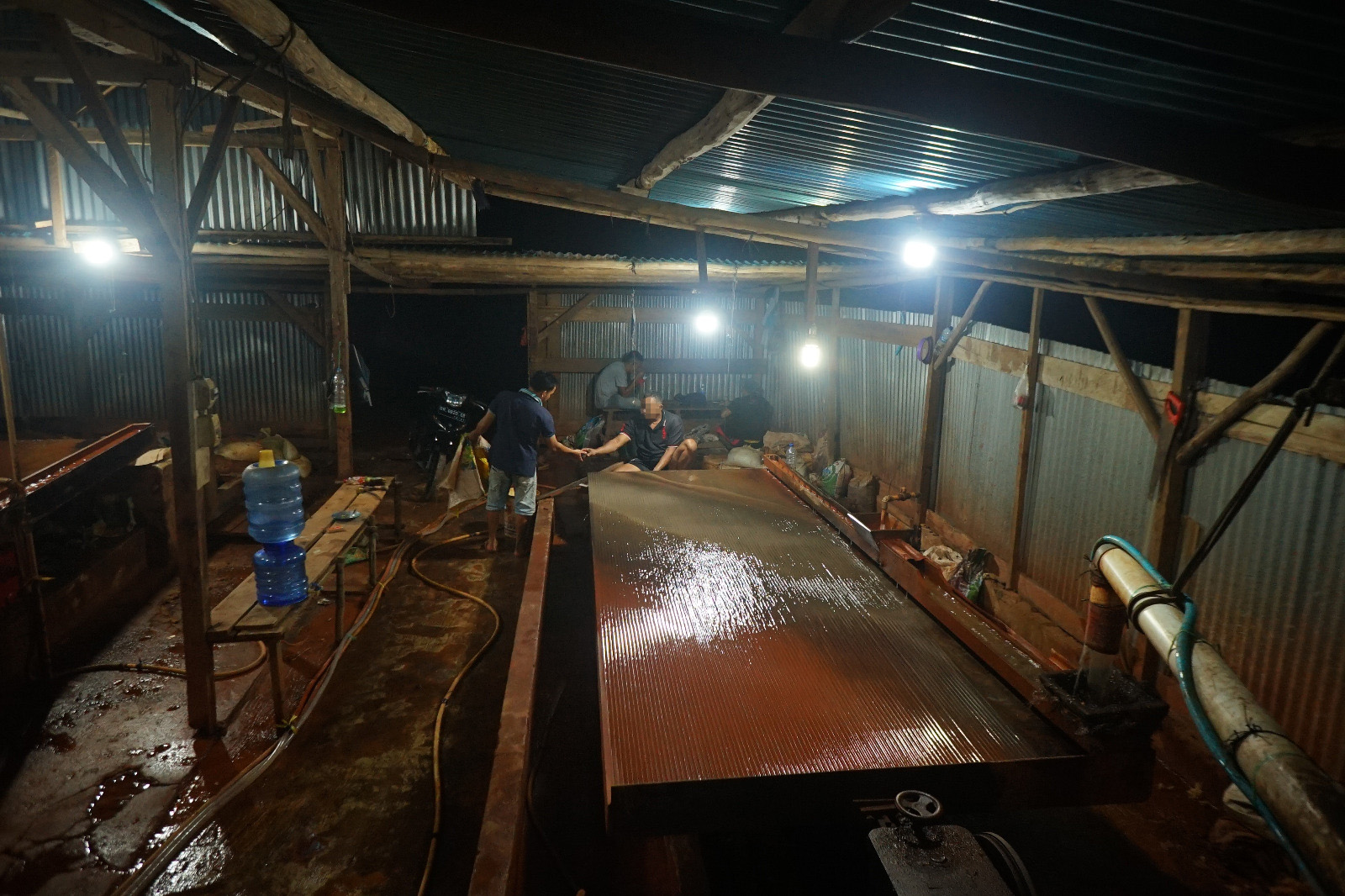
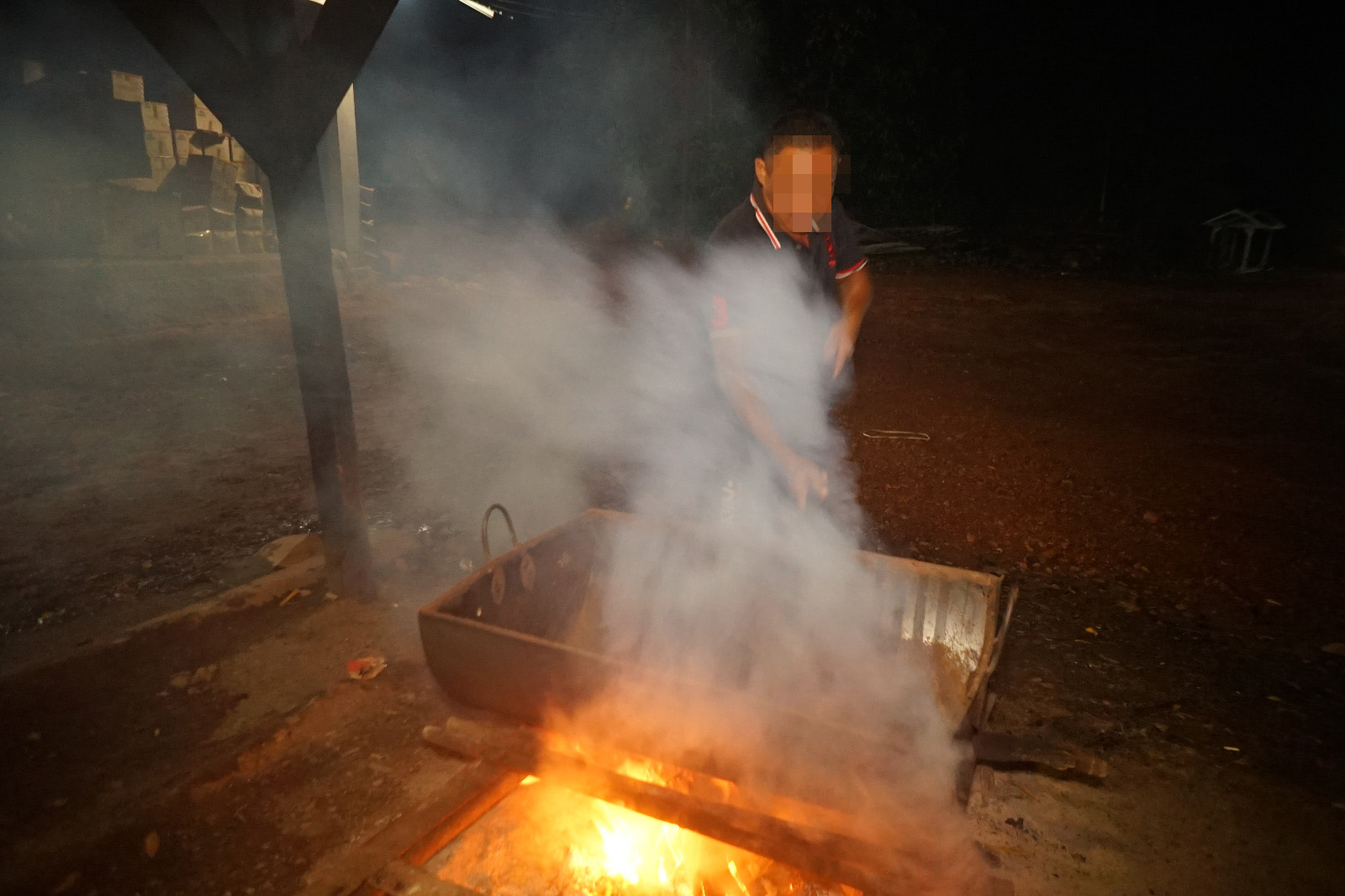
To disguise its payments to smelters, Timah issued fraudulent contracts for transportation services and established 12 shell companies that acted as financial intermediaries, allowing the state-owned giant to receive tax breaks. Finally, Timah covered its tracks by manipulating purchase documents to make it appear that mining had taken place within licensed areas.
In 2023, authorities launched an investigation into the scheme, leading to one of Indonesia’s largest ever mining corruption trials. In court, the company’s then-head of mine and transport supervision testified that it had allowed illegal miners to continue mining in its own concessions, provided that they sold their ore to the state-owned giant. Another former executive testified that Timah even sourced tin from miners who were mining illegally in protected forest areas.
An expert witness told the court that almost half of all tin mining in Timah’s concessions between 2015 and 2022 had been illegal, causing environmental damage that he estimated at more than $16 billion. The scheme had serious impacts on small-scale miners themselves. Many miners, already in desperate economic conditions, were forced into hazardous pits with inadequate safety regulations, resulting in landslides and deaths.
When the verdicts came in, Timah’s former president director, Mochtar Riza Pahlevi Tabrani, was convicted of corruption, with the court ruling that he had entered into corrupt agreements with illegal miners that resulted in substantial damage to the environment. He was sentenced to 20 years in prison and handed a $29 million fine. In total, more than a dozen people—including Timah’s former finance director, private smelter operators, and government officials—were sentenced to prison time.
But Timah itself emerged largely unscathed. The case centred on the corrupt acts of the company’s employees who abused their power and paid bribes—not the illegal mining itself.
Since the ruling, Timah’s public reports suggest that it has experienced few financial or production setbacks. As the months passed, the dust settled. This February, Timah once again presented itself as a bulwark against the illegal trade, announcing a partnership system that it said would help counter illegal mining in one part of the islands.
Yet The Gecko Project’s investigation indicates that illegal mining is ongoing, and that illegal tin is likely to have continued to reach Timah even as the corruption case was in progress.
Digging up the past
Global tin buyers were put on notice that illegal tin was entering Timah’s supply chain more than a decade ago. In 2012, a Bloomberg investigation revealed that small-scale tin collectors who supplied the company were sourcing from miners without asking where their tin came from—and ignoring clear indications that it was illegal.
At the time, a spokesperson said that Timah would instruct its suppliers not to buy tin from illegal sources, and would explicitly prohibit the practice in all future contracts. Well over a decade later, however, illegal tin is taking a similar route into Timah’s supply chain.
Andi, a small-scale operator who collects and processes tin from miners in Belitung, the beginning of a chain that ultimately leads to Timah, told The Gecko Project in December that he never asks miners whether their tin has been extracted legally. “The important thing is that they bring tin,” he said. “We don’t ask where it’s from.” Nonetheless, Andi estimated that around 80 per cent of the miners in his area—including those supplying tin to him—were operating illegally. Legal tin reserves were “practically exhausted”, he said, adding that miners could only cover their running costs by mining illegally.
Andi said that he sells his tin to companies including CV Selby Selumar, a known supplier to Timah. Through this route, illegally mined tin is highly likely to be entering the state-owned giant’s supply chain.
This absence of checks presented in these accounts is corroborated by an academic study by Risky Ristiandy, a researcher who has analysed illegal tin mining in Belitung. The study predates the court case, but examines the same part of the supply chain—artisanal miners providing ore to Timah through collectors—as the sources interviewed by The Gecko Project. Risky observed tin mining in Belitung in late 2022, interviewing dozens of people throughout the supply chain. "Any miner selling to CV Selby Selumar processes their tin at the shaking tables [small-scale tin processors] before selling it to Timah,” he said. “Most tin sold at the shaking tables is not checked—there are no questions like, 'Where did you mine this? Do you have authorisation?'" he said.
CV Selby Selumar did not respond to a request for comment on our findings.
A long-time Timah employee in Belitung, speaking on condition of anonymity, painted a similar picture. They said that the company sourced from smaller operators who often source tin from unlicensed locations, before selling it on to Timah. As of December 2024, they said, Timah employees knew that some of the tin they were collecting was sourced illegally.
The findings highlight a system of unlicensed tin mining feeding into Timah’s operations that exists outside the scheme litigated in the court case. WALHI claims that this is part of a larger system in which smelters, including one operated by Timah, routinely buy illegally sourced ore from tin collectors. “There is no smelter that purely takes tin from mines with mining business permits,” said Ahmad Subhan Hafiz, executive director of WALHI Bangka Belitung. “But it is overlooked by law enforcement.”
Risky, the researcher, suggested that Timah allowed this system to continue because it needed a reliable supply of tin. Buying from illegal miners also entails lower regulatory costs that come with officially-sanctioned mining. “They have the principle that it’s better to make a lot of profit than to spend a lot of capital on the cost of tin production,” he said.
The supply chain
As the corrupt scheme overseen by Timah executives was under way, tech giants including Apple, Samsung, Tesla, Nokia and Ericsson repeatedly listed the firm among their suppliers of tin.
These companies know where their tin comes from because EU and US regulations have defined tin as a “conflict mineral”, in an attempt to prevent armed groups in some countries using tin mining to finance their operations. Global tech firms typically do not buy tin directly from smelters like PT Timah, instead sourcing components via a supply chain that can involve as many as five layers of companies. The regulations require EU and US-based companies to identify which smelters are feeding tin into their supply chain, and to conduct due diligence to ensure that the tin they buy does not fuel conflict.
To show compliance with the regulations, many companies use audits conducted under a standard set by the Responsible Minerals Initiative (RMI), an industry association. The scope of those audits in Indonesia is narrow. Because companies typically do not define Indonesia as a “conflict-affected” or “high risk” area, auditors are simply required to assess the systems used by tin smelters to check where their tin is coming from.
Timah’s Bangka smelter was declared “conformant” by an audit under the RMI’s process in 2021, at a time where the company was deliberately obscuring the source of its tin—much of which had been extracted in illegal and environmentally damaging ways. The firm that conducted the audit, UL Solutions, told The Gecko Project in a statement that it does not comment on individual reports or customers.
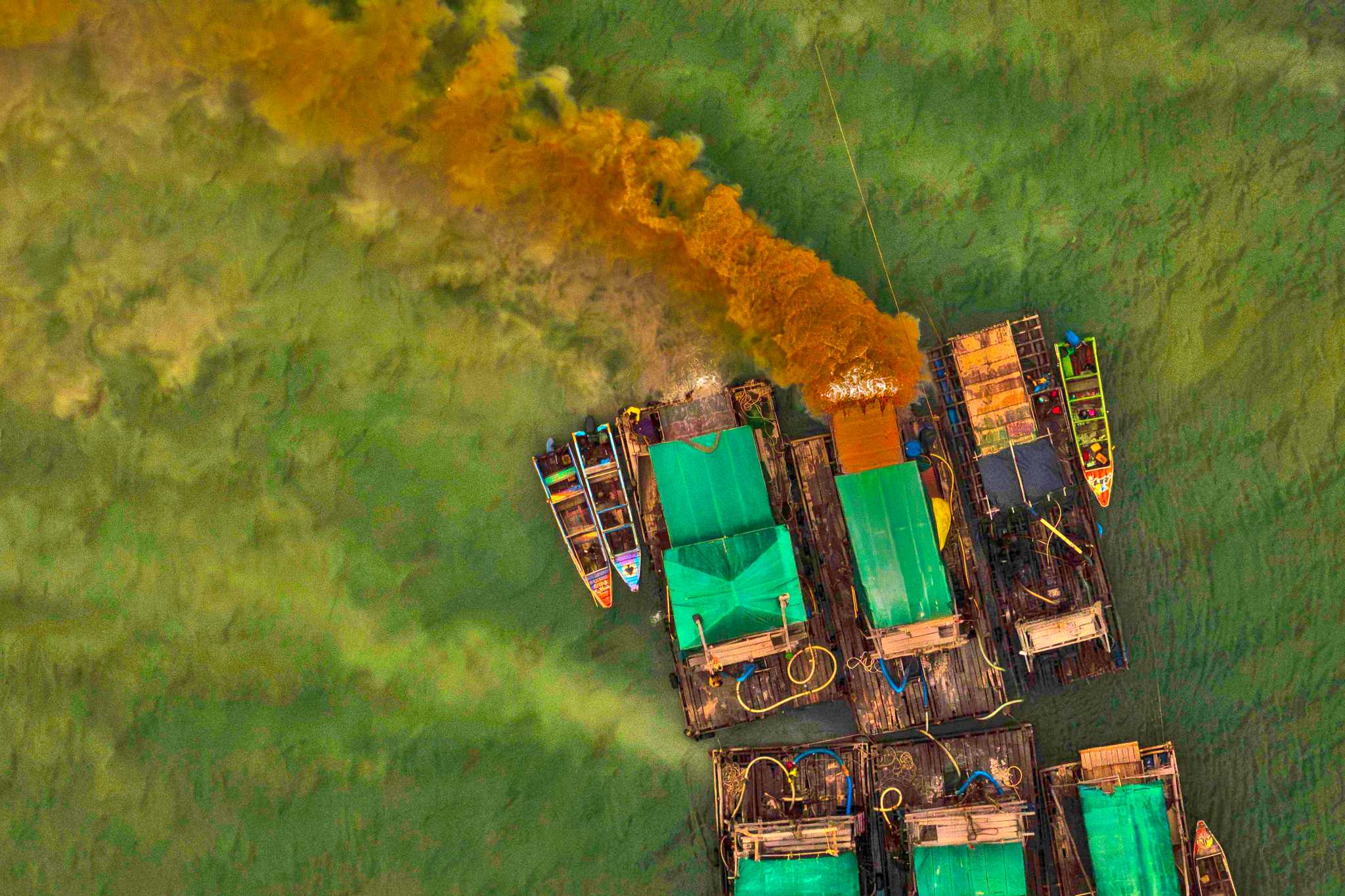
The RMI’s standard says that audits should not be used to assess a company’s performance “beyond the strict scope” of the process and do not cover “all human rights, social, and environmental risks”. But some tech companies have made bigger claims. Samsung, for example, states that by using audits under the RMI scheme, it “can ensure that the minerals [it is] sourcing have been mined ethically regardless of origin.”
Johanna Sydow, head of the Heinrich Böll Foundation’s international environmental policy division, said it was a “huge problem” that conflict mineral regulations place no obligation on companies to identify and mitigate environmental harms. “We definitely need environmental due diligence to be a part of it,” she added.
The risk consultancy Maplecroft told The Gecko Project that it recommends companies sourcing tin from Indonesia conduct “enhanced due diligence” of their suppliers, in part because of Indonesia’s high risk scores for human rights-related issues. This due diligence, said Maplecroft’s Hugo Brennan, could range from analysing risks for an individual mine to conducting physical on-site audits of tin smelters.
Angela Jorns, head of impact innovation at smartphone company Fairphone, said that the current RMI process “is just not enough”. “We need to go beyond the basic conflict mineral stuff,” she added. “For a while the industry wasn't really looking at it, but now there are other companies pushing for it as well. It's just coming slowly and a bit late.”
In response to questions from The Gecko Project, the RMI said that it had developed a new set of standards that cover environmental, human rights and governance risks. The standards were launched in late April.
Even without third-party assessments from auditors, some major buyers of tin could have seen what was coming, according to Nanang Indra Kurniawan, a lecturer at the University of Gadjah Mada. “Companies like Apple could have known,” he said. He added that Apple could have taken steps to avoid sourcing illegal tin after announcing in 2013 that it had undertaken an on-the-ground investigation in Bangka in response to allegations of illegality.
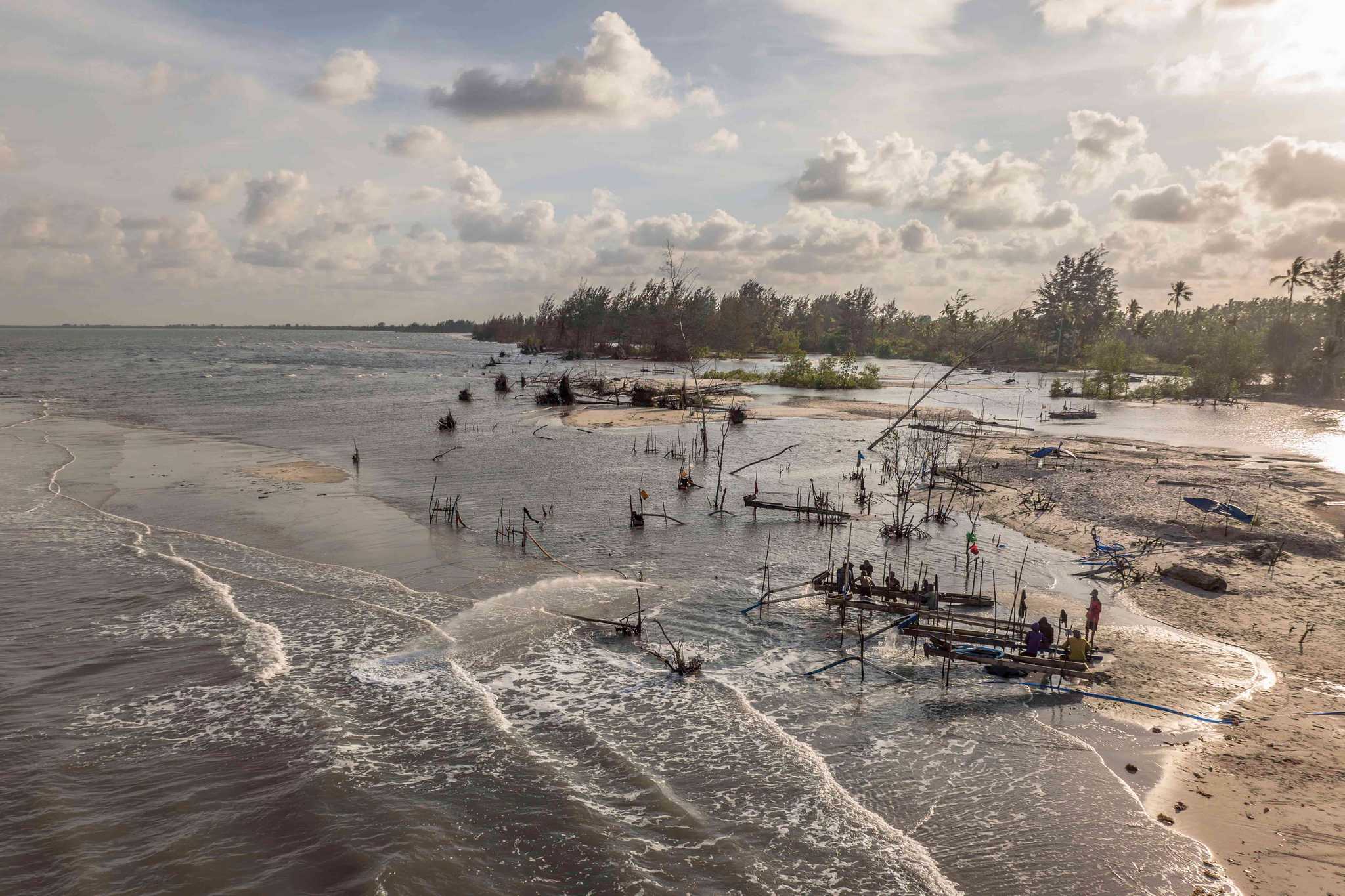
ANU's Warburton raised doubt over whether companies could be trusted to police their own supply chains, and made the case for improved regulation of the sector by governments.
"Companies are in the end ultimately going to put costs and profits, not environmental sustainability, first,” she said. “Governments need to create regulatory environments that force companies to be transparent about their supply chains. It’s ultimately the responsibility of the states where these companies are domiciled to enforce high standards."
In response to a request for comment on our findings, Nokia wrote that it does not have a direct contractual relationship with tin smelters, but requires all suppliers to comply with the law. It wrote that it conducts due diligence in line with EU and US regulations and requires that all smelters go through the auditing scheme managed by the RMI. “When gaps in these industry-wide programs and standards are identified, Nokia takes it seriously and fully supports developing them further,” it added.
Ericsson also noted that Timah’s smelters are not direct suppliers, but “may exist several tiers upstream in the supply chain.” The company wrote that its due diligence processes are “in alignment” with the UN Guiding Principles on Business and Human Rights and OECD guidelines for sourcing minerals from conflict-affected areas, and that it encourages its suppliers to use smelters that adhere to the RMI’s standards.
In response to an initial set of questions, Samsung wrote that it does not “tolerate human rights violations or environmental damage caused by mineral mining in conflict-affected and high-risk areas worldwide”. It said that it works with organisations including the RMI “to eliminate conflict minerals and support responsible minerals sourcing.”
Apple and Tesla did not respond to requests for comment.
“Our ancestors were sailors”
Facing the ongoing ravages of the tin industry, some communities in Bangka Belitung have taken to confronting miners directly.
In Sukamandi, a fishing village on Belitung island, Yudi stood among the remnants of mangroves that once shielded the coast. Each morning, he explained, he replants mangroves in Mangrove Park Pati Unus, an eco-tourism site at Kuale Tambak Beach, Manggar.
In 2021, after illegal mining activity near the village, Yudi raised concerns at a local government meeting. The police intervened, and the mining stopped for a while. But soon afterwards, 150 miners turned up at Yudi’s home to confront him. Mining resumed soon afterwards, and continued into 2024. Police later raided the area to target illegal operations.
Elsewhere in the islands, Timah’s expansion plans are continuing. The company is now preparing to mine in one of Bangka’s last untouched marine areas, near the village of Batu Beriga. According to WALHI, the waters near Batu Beriga host endangered species including green turtles and Napoleon fish, making them critically important in maintaining the region’s biodiversity.
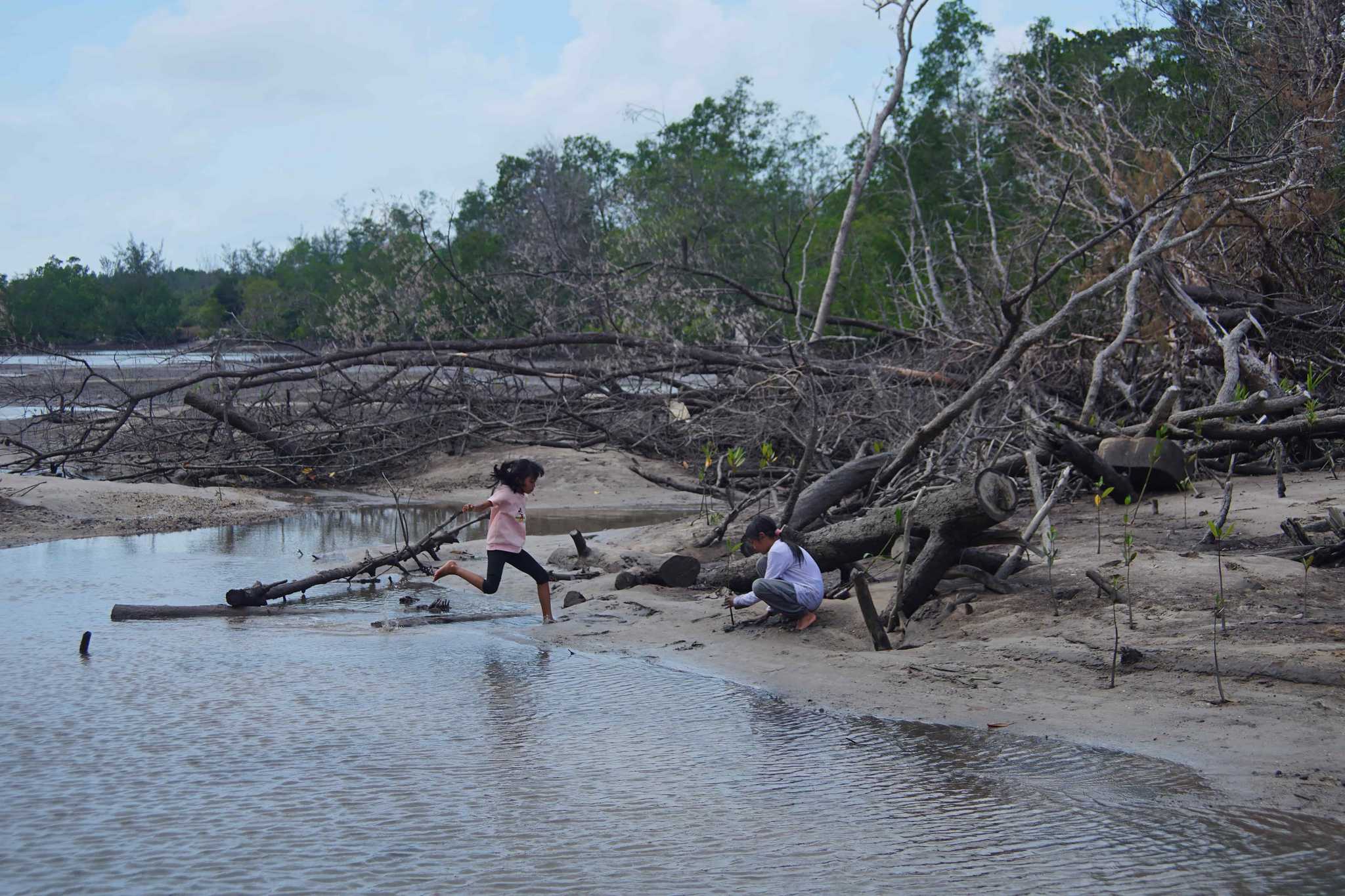
In December, a special task force set up by the provincial government following local opposition recommended that Timah halt mining activities in Batu Beriga until it reaches an agreement with community members. Timah, however, remains determined to press ahead.
Despite local opposition, offshore mining continues across Bangka Belitung, and activists are gearing up for a long fight. “Our ancestors were sailors, not miners,” said Prasetya Jorghi, a local youth leader in his early 20s.
“When mining kills the coral, the fish leave,” he said. “I’ve lived from the sea my whole life, and I’m ready to die for it.”
Read more reporting from The Gecko Project on critical minerals and corporate accountability.
Join The Gecko Project's mailing list to get updates whenever we publish a new investigation.
Reporting by Shabrina and Tom Walker.
Additional reporting by Ties Gijzel.
Editing by Peter Guest and Tomasz Johnson.
Photography and video by Nanang Sujana, Eddie Cheppy Cheever.
Additional photo by Nopri Ismi/Dialogue Earth, CC-BY-NC-ND.
Multimedia editing by Katia Patin.
Fact-checking by Izzy Sasada.


